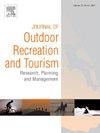城市公园的空间特征是否影响慢跑时公众的情绪反应?来自社交媒体数据的证据
IF 4.4
3区 管理学
Q1 HOSPITALITY, LEISURE, SPORT & TOURISM
Journal of Outdoor Recreation and Tourism-Research Planning and Management
Pub Date : 2025-02-26
DOI:10.1016/j.jort.2025.100864
引用次数: 0
摘要
城市绿地引发的情绪反应对于理解其在公共卫生中的作用至关重要。然而,关于这些空间的特征如何影响人们在活动中的情绪反应,证据仍然很少。本研究旨在探讨慢跑活动中绿地的空间组织和形态特征与情绪偏好之间的联系机制。利用从Flickr社交媒体网站收集的照片,我们通过在线认知服务量化了慢跑时的情绪反应,并探索了情绪的概率、强度和均匀度与绿地特征之间的关系。我们的研究结果强调了情绪反应的显著模式和个体差异,表明女性更经常表现出快乐,而男性倾向于保持中性的情绪状态。此外,我们还发现了城市绿地特征与慢跑时的情绪反应之间的显著相关性。值得注意的是,这些空间内的连通性和整合性与情绪反应的概率和均匀性呈正相关。靠近水体不仅会增加情绪反应的可能性,还会加剧情绪反应。这项研究为人们在体育活动中的情绪反应提供了经验验证的见解,并强调了城市规划者和政策制定者在更新或规划绿地时应考虑的设计质量因素。我们的研究为恢复性环境的循证设计提供了指导,从而增强了城市绿地的潜在情感健康益处。●改善公园内蓝色空间(水景)的布置可以增强户外慢跑者的积极情绪体验。●研究公园游客在户外慢跑时的情绪与公园空间特征的关系,可以指导公园的再开发和重新设计,以丰富游客的休闲体验。●不同性别公园游客的情绪差异为公园环境设计和管理如何满足不同游客的偏好和需求提供了见解。本文章由计算机程序翻译,如有差异,请以英文原文为准。

Do urban park spatial features influence public emotional responses during jogging? Evidence from social media data
The emotional responses elicited by urban green spaces are vital to understanding their role in public health. However, evidence remains scarce on how the characteristics of these spaces affect people's emotional reactions during activities. Our study aims to investigate the mechanisms linking the spatial organization and morphological features of green spaces with emotional preferences during jogging activities. Utilizing photographs collected from the Flickr social media site, we quantified emotional responses during jogging through an online cognitive service and explored the relationship between emotions' probability, intensity, and evenness with green space characteristics. Our results highlight significant patterns and individual variations in emotional responses, indicating that females more frequently exhibit happiness, while males tend to maintain a neutral emotional state. Additionally, we identified significant correlations between the characteristics of urban green spaces and emotional responses during jogging. Notably, connectivity and integration within these spaces are positively linked with both the probability and uniformity of emotional responses. Proximity to water bodies not only increases the likelihood of emotional responses but also intensifies them. This research provides empirically validated insights into emotional reactions during physical activities and underscores the design quality considerations that urban planners and policymakers should account for when updating or planning green spaces. Our study offers guidance for evidence-based design of restorative environments, thereby enhancing the potential emotional health benefits of urban green spaces.
Management implications
- ●Improving the arrangement of blue spaces (water features) in parks can enhance outdoor joggers' positive emotional experiences.
- ●Examining how park visitors' emotions during outdoor jogging correlate with park spatial characteristics can guide the redevelopment and redesign of parks to enrich visitors' recreational experiences.
- ●The emotional differences observed among park visitors of different genders provide insights into how park environmental design and management can cater to diverse visitor preferences and needs.
求助全文
通过发布文献求助,成功后即可免费获取论文全文。
去求助
来源期刊

Journal of Outdoor Recreation and Tourism-Research Planning and Management
HOSPITALITY, LEISURE, SPORT & TOURISM-
CiteScore
6.70
自引率
5.30%
发文量
84
期刊介绍:
Journal of Outdoor Recreation and Tourism offers a dedicated outlet for research relevant to social sciences and natural resources. The journal publishes peer reviewed original research on all aspects of outdoor recreation planning and management, covering the entire spectrum of settings from wilderness to urban outdoor recreation opportunities. It also focuses on new products and findings in nature based tourism and park management. JORT is an interdisciplinary and transdisciplinary journal, articles may focus on any aspect of theory, method, or concept of outdoor recreation research, planning or management, and interdisciplinary work is especially welcome, and may be of a theoretical and/or a case study nature. Depending on the topic of investigation, articles may be positioned within one academic discipline, or draw from several disciplines in an integrative manner, with overarching relevance to social sciences and natural resources. JORT is international in scope and attracts scholars from all reaches of the world to facilitate the exchange of ideas. As such, the journal enhances understanding of scientific knowledge, empirical results, and practitioners'' needs. Therefore in JORT each article is accompanied by an executive summary, written by the editors or authors, highlighting the planning and management relevant aspects of the article.
 求助内容:
求助内容: 应助结果提醒方式:
应助结果提醒方式:


